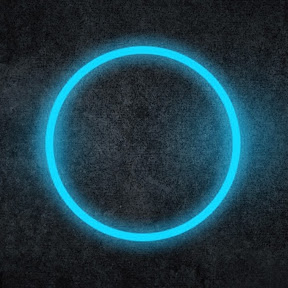On very good productions, a Hollywood style movie takes produces roughly 1 to 5 minutes a day of content during filming. Not continuous, of course, on average, and not everything that is shot gets released. Think about it, 90 days if shooting to make a two hour film, if preproduction was well made and nothing goes wrong with logistics during production. Then you have post production which is even slower.
Now think that 3D content was at least twice as hard, expensive and complex to film. With even longer and more difficult post production. For content that made half the audience nauseous, and it cost them twice as much.
Digital productions shortened that gap, but it is still way too annoying to actually become more mainstream. Several developments in camera technology promised easier logistics and cheaper production, and more accessible consumer grade products for consumption. But ultimately these gains never materialized and the numbers simply didn’t make sense.
Best 3D movie that wasnt Avatar? Dredd was awesome in 3D.
Most of my family said the active glasses induced headaches.
My family had one at one point growing up. As everyone else has said, there wasn’t much content. There was Avatar and maybe four or five others. The real killer though was the glasses sucked. You didn’t want to sit there for two hours with them on. I preferred 2D but comfortable.
A lot of the same issues VR has that relegates it to a very niche hobby, as well as VR itself becoming more of a thing.
Basically, it’s twice the cost at a minimum. Want 3D movies? Well, that’s 2 cameras, double the storage, and all of the added workload in alignment, effects needing to be done for each eye… Basically double everything and add some to stitch them together.
3D games? Same thing, but with calculations. You have to render each eye, plus the calculations to keep them aligned and in the right place.
3D screens? You have to render each eye, so you have to either do glasses or funky screen tech like the 3DS to get that image to each eye at the right time, so the usual minimum is a screen that refreshes twice as fast plus a bit extra with the glasses to tie it all together.
See the pattern? It’s twice as hard, twice as expensive, plus a little extra.
Which begs the question:
Is it twice as good, plus a little extra?
3D has tried to be a thing for well over half a century, and failed every time.
from red/blue disposable glasses to modern headsets, it has always beem a niche for two fundamental reasons:
- The cost to produce content
- The inconvenience to view it
It’s trivial to throw a movie on while you’re folding laundry or cooking. Watching 3D means putting on a device that (currently) prevents you from doing anything else, the Sitting and Watching. And the content is some degree of unwatchable without that.
Aside from ALL the shit other people have said, 3d always gets used like shit anyway. The way to make it shine is to give depth to images, and everyone wants to use it to make shit “pop out of the screen at you”.
Otherwise it’s subtle. So why bother with the extra infrastructure for no additional effect?
This is the way. The movies I’ve watched in 3d that used it only in this way have been amazingly done. The goofy jump scare pop out the screen is best left for Disney world.
None of my family will watch 3D in theatres. It makes them sick.
This is a huge factor.
This is the answer I was expecting to find. Between people it makes nauseous and people who don’t have they eyesight for it, there’s enough trouble to skip.
They needed accessories (polarized glasses or battery powered glasses that alternated frames to produce the 3d effect) to access the 3d features. Also things needs to be produced with 3d in mind or else it just looks like a crappy pop up book. Source: I had one and hated why it did to video games and movies that weren’t intended to be experienced in 3d
3d didnt work for some people, made other people sick, required special glasses just to watch, and also required the seating positions and tv to be at certain angles and distances: meaning unless the whole room was changed just for the viewing experience, only a few select people would be able to enjoy the 3d.
Also a dirth of content as making 3d is more difficult.
I dislike watching movies in 3D and prefer them in normal 2D.
I feel like 3D is a different kind of medium. Directors used to shoot movies that look good on a 2D screen weren’t fully utilizing the possibilities of the new medium. However, shooting movies solely for being presented in 3D would not have been financially viable.
VR suffers from a similar problem. But thanks to lower costs, compared to a Hollywood movie, it’s possible to target the smaller market of VR users.
Nobody wants to wear dork goggles to watch TV.
Yeah! I want to wear dork goggles away from my TV!
There was not enough content for 3D TVs and people didn’t want to wear special glasses.
Also, consoles were too weak to display 3D content.
Weren’t there like Blu-Rays? I guess the first movie I watched was Avengers (2012) and it really didn’t blew me away
Nowadays I watch movies with my Quest 2 on the big screen app and think, holy shit
The media (Blu-ray, dvd, whatever…) didn’t matter so much. Adding depth fields to existing media works, but it isn’t exactly perfect. The tech should be much better now, but it took a fuck ton of manual labor to convert films to be compatible with 3D. Back when 3D TVs were being pushed, studios had to film movies in 3D as well, which took more time and more equipment.
Here is an old pic I took during the conversion of Titanic into 3D since it wasn’t filmed in 3D from the start. Each frame needed to have depth fields mapped, by hand, in a room filled with jr level staff. This work was split across multiple studios.

Native stereoscopic capture has massive labour costs itself, and there were many issues where one eye had corrupted footage or imperfections, so the insurance paid for the footage to be post-converted from the one good eye anyway.
Even where it went right, it more than doubled the size and weight of the camera system, and changing a lens would be a complex process taking 30 minutes instead of the minute or two normally required which significantly reduced the material that could be captured in a day. Post-production labour is far far cheaper. So post-conversion very quickly became the norm.
Yes, you needed a 3D disk player, 3D TV, 3D version of whatever you want to watch. That’s a lot of upfront costs.
Very few movies are filmed in 3D. Avatar did it right but almost nothing else did and it shows.
Video games should be doing it right now on PC but most folks would rather use all the extra horsepower to run their games at 200fps.
I mean we have VR, make the case for 3D while VR is a thing
VR seems a lot more isolating than 3D glasses in front of a TV. Even the powered active 3D glasses are a lot less cumbersome than any VR headset.
I absolutely wish that someone made a 3D TV with the New 3DS technology in 4K. Have the 3D effect turn off when more than one person is watching TV.
I think you might be one of the few guys, that prefer 3D over VR
Weirder things have happened.
3D TVs were pushed by movie studios trying to sell 3D Blu-rays at a time when streaming was killing the idea of physical media.
Video games didn’t go all-in. Which made it even more niche.
VR is having a lot of growing pains.
I got a 3d tv after seeing fury road 3 times in theaters.
The issue is that 3-d content was, at best, 1080p. That’s 720p per eye. And on a 4k tv it looks low res and shitty.
plus the active lenses remove a lot of the brightness during the opening/closing, so the picture was darker too.
if it was anything close to what it was like with passive glasses in the theater I believe it would have caught on.
They made 3D TVs with passive glasses too, I had one. Still have actually, working fine 10 years later.
Has some neat tricks like coming with two pairs of “game” glasses that are effectly two left lenses for one person and two right lenses for the other, giving the ability to play a two-player split screen game with each player having a full-screen view (albeit stretched) and not being able to see the other! Trippy.
IMO the reason they didn’t catch on wasn’t the technology, just that it genuinely didn’t add much to the movie watching experience. What makes a movie worth watching continues to be the movie itself, and in some ways 3D - which was meant to be “immersive”- was actually just a distraction from the movie which frequently reminds you you’re actually just sat in a room watching a screen, rather than letting you get into the story.
They are not impressive, they were extremely expensive, and there was no standard for distributing 3-D movies.
Finally. Everyone got over their craze for three movies and instead I was more interested in 4K.
Yeah, nowadays I only watch movies in 4K and it’s night and day over Full HD and I don’t know why anyone would say otherwise.
Honestly 2k is fine for most tvs, I wish that became standard. Imo 4k should be reserved for computer screens and the like, that are less than a metre from you, most people can’t really see the difference anyway, it all depends on screen size and distance. From memory a 60inch at 2m will not look any different in 1080 or 4k.
Also side rant, drives me mad when people are more worried about resolution than bitrate (not directed at anyone here) . I have a friend who “can’t stand watching things in 1080p” but half the 4k streaming content is compressed to hell.
but half the 4k streaming content is compressed to hell.
You can up that to 80%. Almost anything coming from Netflix in 4k is severely bitrate starved.
Then there is the opposite extreme, like the Arcane blu-rays that put animated content in a 100 Mbit/s stream. Completely overkill but I love it.
1080 is quicker to download an easier to store than 4K. There is a difference between them, but it’s not a huge deal if youvd got good quality full HD. Leaves me plenty of space on my home server for other data hoarding.
I used to think the space until I saw movies like Oppenheimer and I can’t go back to 1080p.









